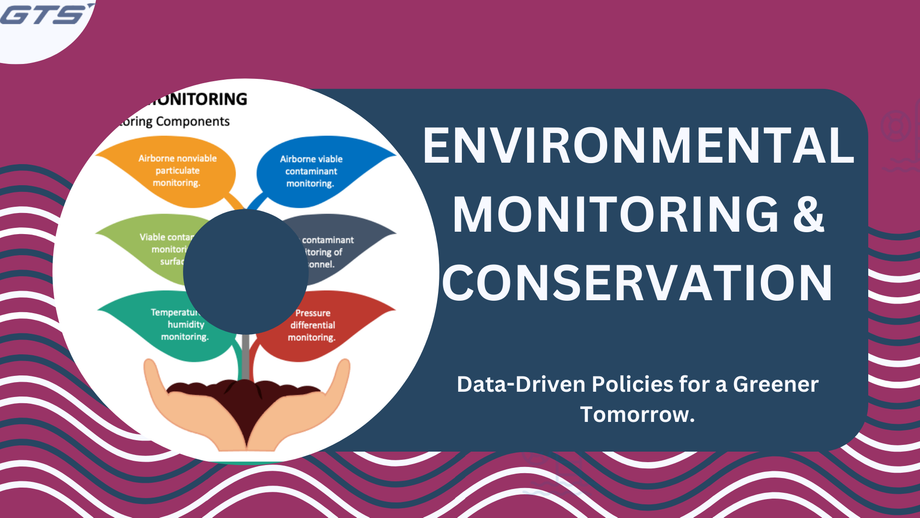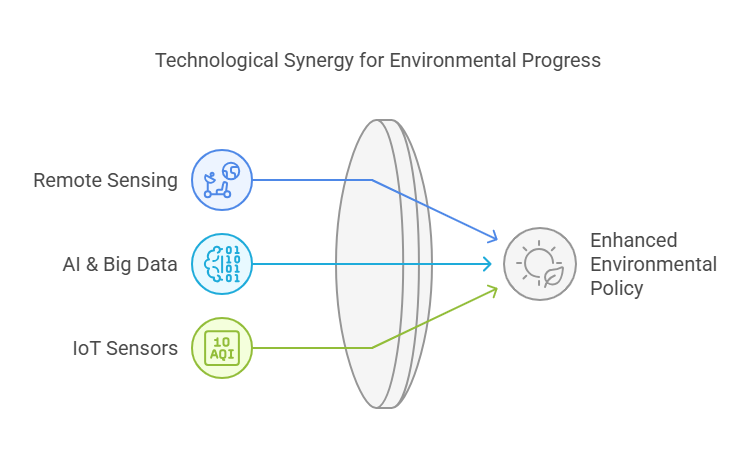
Introduction
In a time marked by swift Environmental Monitoring & Conservation changes, governments across the globe are utilizing environmental monitoring data to formulate and execute effective policies. This data-driven approach is revolutionizing environmental governance by enabling the tracking of air and water quality and evaluating the effects of climate change. This blog delves into the methods by which governments gather, analyze, and apply environmental monitoring data to craft policies that foster sustainability and safeguard natural resources.
The Significance of Environmental Monitoring
Environmental monitoring entails the systematic collection of data regarding various ecological and atmospheric elements, including:
- Air quality – Evaluating pollutants such as carbon monoxide, nitrogen oxides, and particulate matter.
- Water quality – Analyzing contaminants present in rivers, lakes, and oceans.
- Biodiversity – Monitoring wildlife populations and the health of their habitats.
- Deforestation rates – Employing satellite imagery to identify illegal logging and land degradation.
- Climate patterns – Tracking temperature changes, extreme weather occurrences, and rising sea levels.
Through ongoing monitoring of these elements, governments can foresee environmental challenges, enforce regulations, and devise long-term conservation strategies.
How Governments Utilize Environmental Data in Policy Development
1. Establishing Regulations and Standards
Governments leverage environmental monitoring data to create and enforce regulations, including:
- Setting air quality standards to restrict industrial emissions.
- Regulating waste management and pollution control within industries.
- Implementing fishing quotas to avert overfishing and preserve marine biodiversity.
- For instance, the U.S. Environmental Protection Agency (EPA) utilizes air pollution data to copyright the Clean Air Act, which imposes limits on harmful emissions.
2. Addressing Climate Change
By examining climate data, governments formulate policies aimed at reducing greenhouse gas emissions and encouraging the use of renewable energy sources. Initiatives include:
- Carbon pricing strategies such as carbon taxes and cap-and-trade systems.
- Investment in renewable energy sources such as solar and wind power.
- Strategies for adaptation in coastal cities confronting rising sea levels.
3. Safeguarding Public Health
Environmental data is essential for protecting public health. Authorities monitor air and water quality to mitigate diseases associated with pollution. Key policies include:
- Prohibiting harmful chemicals in consumer goods and agricultural practices.
- Implementing safety standards for drinking water to shield communities from contamination.
- Minimizing exposure to hazardous waste through stringent disposal regulations.
4. Preserving Natural Resources
Governments employ satellite imagery, sensors, and ecological assessments to monitor deforestation, soil degradation, and water scarcity. Policies informed by this data encompass:
- Legislation for forest conservation to deter illegal logging activities.
- Promotion of sustainable agricultural practices to address soil erosion and water depletion.
- Establishment of marine protected areas to preserve ocean biodiversity and coral reefs.
5. Preparedness and Response to Disasters
Real-time environmental monitoring enables governments to effectively respond to natural disasters such as hurricanes, wildfires, and floods. Policy initiatives include:
- Early warning systems for severe weather occurrences.
- Emergency response strategies aimed at reducing human and economic impacts.
- Urban planning regulations designed to lessen vulnerability in areas prone to disasters.
The Impact of Technology on Environmental Policy

Technological advancements are transforming environmental monitoring and policy development. Governments are increasingly utilizing:
- Remote sensing and satellite imagery for comprehensive environmental evaluations.
- Artificial Intelligence (AI) and big data analytics to identify trends and predict environmental shifts.
- Internet of Things (IoT) sensors for continuous monitoring of air and water quality.
- These technological innovations improve the precision and effectiveness of data collection, facilitating more proactive and adaptive environmental policies.
Conclusion
Data from environmental monitoring serves as a crucial resource for governments in formulating policies aimed at safeguarding ecosystems, public health, and natural resources. By utilizing Globose Technology Solution and insights derived from data, policymakers can create effective, science-informed regulations that encourage sustainability and enhance resilience to environmental challenges.
As environmental issues become increasingly pressing, the significance of data in the policy-making process will further increase. Prioritizing the development of comprehensive monitoring systems and promoting international cooperation will be vital in establishing a greener and more sustainable future for everyone.